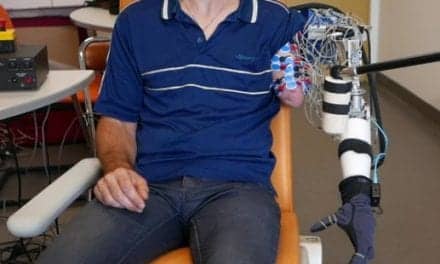Alexander technique lessons in combination with an exercise program offer long-term effective treatment for chronic back pain, according to a study published on the British Medical Journal Web site. Back pain causes more disability than almost any other condition in Western societies, but very few effective long-term treatments are available to patients.
Previous research shows that the Alexander technique and massage may help relieve back pain in the short-term, but little is known about the long-term outcomes. The educational technique involves a personalized approach to help patients develop lifelong skills for self care to improve postural tone and muscular coordination, and is taught to be practiced by patients on their own—it is not a form of exercise.
A team of researchers from the University of Southampton and the University of Bristol compared the effectiveness of massage, exercise, and the Alexander technique for the relief of back pain over 1 year.
Professor Little and colleagues recruited 579 patients with chronic or recurrent back pain from 64 general practices in the south and west of England. Patients were randomized to receive normal care, massage, six Alexander technique lessons, or 24 Alexander-technique lessons. Half of the patients from each of the groups were also prescribed an exercise program (brisk walking for 30 minutes a day, five times a week).
Patients were sent disability questionnaires at 3 months and 1 year to record which activities were limited by their back pain, such as walking more slowly than usual or getting out of the house often.
The authors found that after one year, exercise combined with lessons in the Alexander technique significantly reduced pain and improved functioning whereas massage offered little benefit after 3 months.
After 1 year of Alexander technique lessons, patients reported fewer days with back pain over the past 4 weeks. Patients receiving normal care reported 21 days of back pain, compared with those who received 24 lessons of Alexander technique who experienced 18 fewer days of pain. Those who had six lessons reported 10 fewer days of pain, and those having massage said they had 7 fewer days of pain.
Patients receiving Alexander-technique lessons also reported improved quality of life.
Six one-on-one lessons in the Alexander technique followed by exercise had nearly as much benefit (72%) as 24 lessons in the Alexander technique alone.
"Massage is helpful in the short term…[but] the Alexander technique retained effectiveness at one year…the results should apply to most patients with chronic or recurrent back pain," the researchers said.
In an accompanying editorial, Professor Maurits van Tulder from VU University in the Netherlands, says exercise therapy has also been shown to be effective for chronic, lower-back pain and calls for further research to compare the Alexander technique with different types of exercise.
[Source: Science Daily]



